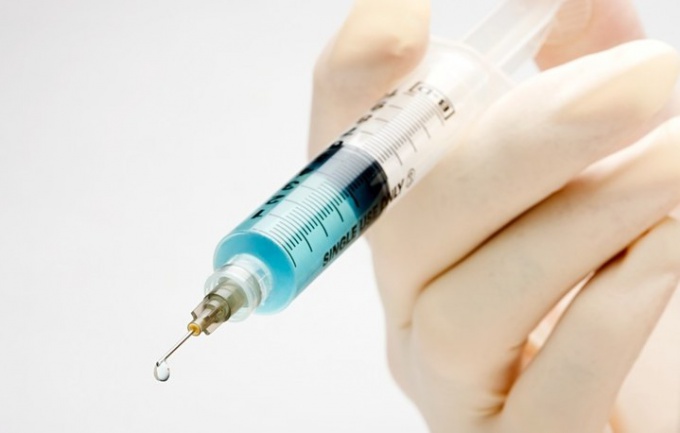Instruction
1
Even if a woman is planning pregnancy, lack of progesterone , will prove reproductive disorders. It can be as uterine bleeding, irregular menstrual cycle and amenorrhea. If you suspect hormonal problems should not begin treatment without going to the doctor and confirmation of progesterone deficiency laboratory methods. Give blood on an empty stomach on a 22-23 day cycle. The results of the analysis will be judged: the body needs hormonal support or not.
2
Injections of progesterone can be administered subcutaneously or intramuscularly. The effectiveness of the treatment depends on the method of drug administration. However, painful feelings are less pronounced after intramuscular injection, so doctors often prescribe them. Besides if subcutaneous injection are often formed seals and subcutaneous hematoma.
3
Before you dial the medication into the syringe, warm the ampoule to a temperature of 36-40°C. In this case, the oil solution of progesterone becomes less viscous and lighter is injected into the muscle.
4
If progesterone is assigned to you for the treatment of dysfunctional uterine bleeding, do the injections for 6-8 days. Optimal dose of 5-10 mg (0.5-1 ampoule of 1% solution).
5
To maintain pregnancy take injections of progesterone every day. Depending on the severity of the condition, the dosage may range from 1 ml of 1% up to 1 ml of 2.5% solution. Stop the treatment when all symptoms disappear, indicating the possibility of miscarriage.
6
Habitual abortion start hormonal support for the early stages of pregnancy. Until the end of the first trimester do intramuscular injections of progesterone in a dosage of not more than 25 mg (either 1 ampoule of 2.5% solution, or 2.5 vials of 1% solution).
Note
Depending on the severity of the symptoms, indicating Progesteronum failure, may be assigned a different treatment regimen. Before starting therapy consult your doctor.
